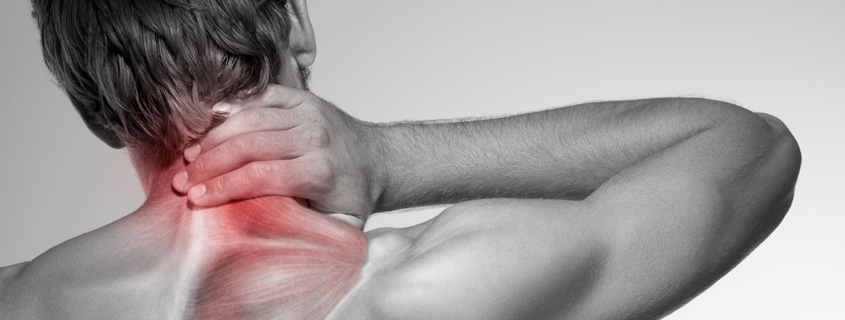How to tell if you have a Herniated Disk
Article Featured on AAOS
A common source of back or neck pain is a herniated disk. Sometimes called a “slipped” or “ruptured” disk, this condition most often occurs in the lower back, as well as the smaller disks in the neck.
Although a herniated disk can sometimes be very painful, most people feel much better with just a few months of simple, nonsurgical treatments.
Anatomy
Disks are soft, rubbery pads found between the hard bones (vertebrae) that make up the spinal column. The disks between the vertebrae allow the back to flex or bend. Disks also act as shock absorbers.
Disks in the lumbar spine (low back) are composed of a thick outer ring of cartilage (annulus) and an inner gel-like substance (nucleus). In the cervical spine (neck), the disks are similar but smaller in size.
Cause
A disk herniates or ruptures when part of the center nucleus pushes through the outer edge of the disk and back toward the spinal canal. This puts pressure on the nerves. Spinal nerves are very sensitive to even slight amounts of pressure, which can result in pain, numbness, or weakness in one or both legs.
Risk Factors
In children and young adults, disks have high water content. As people age, the water content in the disks decreases and the disks become less flexible. The disks begin to shrink and the spaces between the vertebrae get narrower. Conditions that can weaken the disk include:
- Improper lifting
- Smoking
- Excessive body weight that places added stress on the disks (in the lower back)
- Sudden pressure (which may be slight)
- Repetitive strenuous activities
Symptoms
Lower Back
Low back pain affects many people. Pain alone is not enough to recognize a herniated disk. See your doctor if back pain results from a fall or a blow to your back. The most common symptom of a herniated disk is sciatica—a sharp, often shooting pain that extends from the buttocks down the back of one leg. It is caused by pressure on the spinal nerve. Other symptoms include:
- Back pain
- Weakness in the leg and/or foot
- Tingling (a “pins-and-needles” sensation) or numbness in the leg and/or foot
- Loss of bladder or bowel control (This is rare and may indicate a more serious problem called cauda equina syndrome. This condition is caused by the spinal nerve roots being compressed. It requires immediate medical attention.)
Neck
As with pain in the lower back, neck pain is also common. When pressure is placed on a nerve in the neck, it causes pain in the muscles between your neck and shoulder (trapezius muscles). The pain may shoot down the arm. Other symptoms include:
- Weakness in one arm
- Tingling (a “pins-and-needles” sensation) or numbness in one arm
- Burning pain in the shoulders, neck, or arm
Doctor Examination
To determine whether you have a herniated disk, your doctor will ask you for a complete medical history and conduct a physical examination.
A physical examination will help determine which nerve roots are affected.
To help confirm a diagnosis of herniated disk, your doctor may recommend a magnetic resonance imaging (MRI) scan. This test can create clear images of soft tissues like intervertebral disks.
Treatment
Nonsurgical Treatment
Nonsurgical treatment is effective in treating the symptoms of herniated disks in the majority of patients. Most neck or back pain will resolve gradually with simple measures.
- Rest and over-the-counter pain relievers may be all that is needed.
- Muscle relaxers, analgesics, and anti-inflammatory medications are also helpful.
- Cold compresses or ice can also be applied several times a day for no more than 20 minutes at a time.
- After any spasms settle, gentle heat applications may be used.
Any physical activity should be slow and controlled, especially bending forward and lifting. This can help ensure that symptoms do not return, as can taking short walks and avoiding sitting for long periods. For the lower back, exercises may also be helpful in strengthening the back and abdominal muscles. For the neck, exercises or traction may also be helpful. To help avoid future episodes of pain, it is essential that you learn how to properly stand, sit, and lift.
If these nonsurgical treatment measures fail, epidural injections of a cortisone-like drug may lessen nerve irritation and allow more effective participation in physical therapy. These injections are given on an outpatient basis over a period of weeks.
Surgical Treatment
Only a small percentage of patients with disk herniations require surgery. Spine surgery is typically recommended only after a period of nonsurgical treatment has not relieved painful symptoms.
- Lumbar microdiskectomy. This is the most common procedure for a herniated disk in the lower back. Microdiskectomy involves removing the herniated part of the disk and any fragments that are putting pressure on the spinal nerve.
- Cervical diskectomy and fusion. Cervical diskectomy is a procedure for the herniated disk in the neck. To relieve pressure, the entire herniated disk is removed. Bone is placed in the disk space and a metal plate may be used to help support the spine.
Orthopedic & Sports Medicine Center of Oregon is an award-winning, board-certified orthopedic group located in downtown Portland Oregon. We utilize both surgical and nonsurgical means to treat musculoskeletal trauma, spine diseases, sports injuries, degenerative diseases, infections, tumors and congenital disorders.
Our mission is to return our patients back to pain-free mobility and full strength as quickly and painlessly as possible using both surgical and non-surgical orthopedic procedures.
Our expert physicians provide leading-edge, comprehensive care in the diagnosis and treatment of orthopedic conditions, including total joint replacement and sports medicine. We apply the latest state-of-the-art techniques in order to return our patients to their active lifestyle.
If you’re looking for compassionate, expert orthopedic surgeons in Portland Oregon, contact OSM today.
Phone:
503-224-8399
Address
17355 Lower Boones Ferry Rd Suite 100A
Lake Oswego, OR 97035
Hours
Monday–Friday
8:00am – 4:30pm



